Seeing tire marks on your garage floor is one of the most common sights inside garages and it can be heart breaking. If you've spent a lot of time and money on doing your garage floor, the last thing you will want to see on it, is tire marks.
To know how to prevent tire marks from appearing on your garage floor, first you need to know what tire marks are.
There a couple of different tire marks that can occur on your floor. All tire marks are not the same and they appear on different surfaces, under different conditions.
Most often tire marks on concrete garage floors or driveways are caused by hot tires. For example, if your car has been sitting in the garage for a while, your tires will be cold to touch. However, if you've just parked your car inside your garage, after going to the mall or for a drive, your tires will be hot to touch. This is because heat builds up in your tires due to a friction between the tires and the road.
Tire manufactures use plasticizer to soften your car tires. When the tires are hot, these plasticizers can transfer from the tires to your concrete floor.
When you park your car in your garage, your tires tend to be in contact with the same spot in the garage every night. Over time, you will end up seeing four tire marks on the spot where your car tires sit on your garage. This is due to the plasticizers build up on your concrete garage floor.
And if you think high quality tires will not leave marks on your floor, think again. High quality tires, use higher quantity of plasticizers.
When your car tires are hot, they expand. When they cool down, they shrink. Because of the weight of the car and the shrinkage of the tires, just a wee bit of the concrete sealer or the epoxy coating is pulled off the concrete garage floor. This builds up over a period of time as the car is pretty much parked at the same spot every night.
This can be most noticeable when you have a coating on your floor that has not bonded with the concrete floor.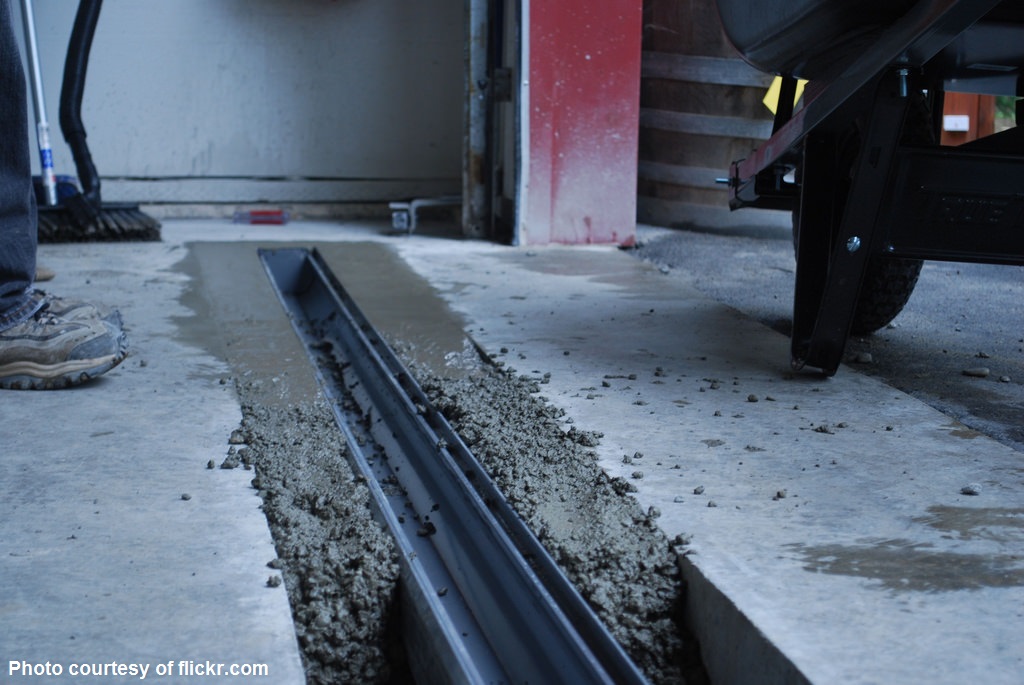 When that's the case, your car tires can lift a big chunk of the coating when you drive off.
When that's the case, your car tires can lift a big chunk of the coating when you drive off.
Let's face it, roads are not the cleanest places. When you drive, your tires collect whatever is on the road, from oils, dirt, rocks and even roadkill.
When you drive in, your tires are going to leave some of that on your driveway and your garage floor. They are easy to detect as they are streaks. Thankfully they are also not that hard to clean.
Epoxy coatings are your best bet if you want to protect your garage floor or driveway from tire marks and other stains and damages.
Epoxy is really hard, smooth & glossy. These features combined with the flexibility of polyurethane topcoats are helpful as epoxy floors pick up very little of the tire chemicals that are released when the tire is hot. As epoxy is also non-porous, tire chemicals or car oils will not be able to soak into it, making them extremely easy to clean.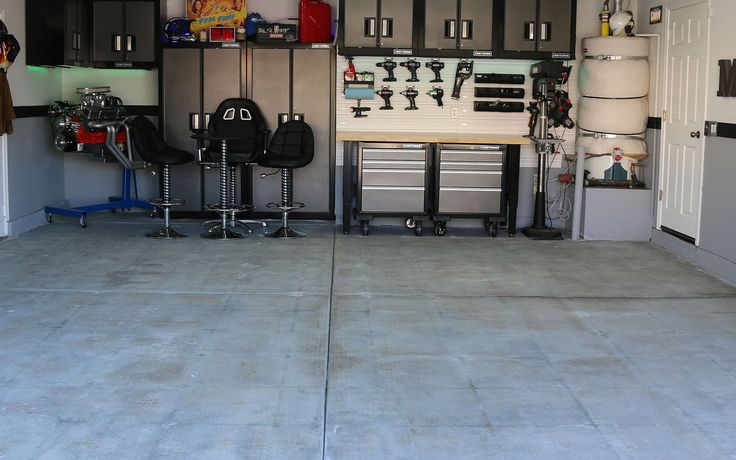
To make your floor more decorative, you can add flake chips to your epoxy coating. This will not only add a splash of color to your floors, but will also hide any imperfections in the floor and an extra layer of protection. If you wan to take it to the next level, you can opt for metallic epoxy, which will transform your garage to out of this world.
Tire marks on garage floors are unsightly. Especially if you spent money putting down a nice, epoxy floor or like a clean, stain-free appearance. And if you are like me and had to use a brush and detergent or cleaning solution to try and remove them, you’ll probably agree that the best solution is to avoid them in the first place.
It’s a tough job!
In this article, I am going to show you how to prevent tire marks on a garage floor, how to remove them, and what is the best way to prevent them in the future.
Table Of Contents
You might be wondering why your car tires are creating black tire marks on your garage floor when you aren’t slamming on your brakes or squealing your tires. Why are these tire marks appearing out of thin air?
Why are these tire marks appearing out of thin air?
Simply pulling in and out of your garage can leave tire marks all over your nice epoxy flooring or concrete floor. While high-quality epoxy floors and sealers can help reduce tire marks, they won’t entirely eliminate them.
There are two primary causes for tire marks on your garage floor; burnouts or skidding or plasticizer migration, both amplified with hot tires. Since most of us aren’t squealing tires or doing burnouts in our garage, the most likely cause is due to tire heat from driving and the breakdown of compounds in the tire itself that buildup and stain the floors.
This process is called plasticizer migration.
Plasticizer migration (in terms of tires) is a fancy term that simply means that the chemical polymer compounds in rubber, called plasticizers leech out of the tire and onto the floor. Over time this leads to black stains and marks on your garage floor.
Over time this leads to black stains and marks on your garage floor.
When you drive, the friction from the tire causes the tire to heat up and get hot. Once you park in the garage, the hot tire begins to cool. As it cools, the tire settles slightly (or relaxes) as tire pressure lowers slightly and this allows the tire to rub or slightly against the surface of the garage floor. This allows the plasticizers and other compounds such as oil to leech from the rubber along with dirt picked up from the road. Turning your tires while the car is parked can also increase the chance of leaving a mark on the floor.
The higher quality of the tire, the more plasticizers are used to soften the tires and give them a better grip on the road surface.
High-performance tires and all-season tires tend to be the worst offenders due to their higher quality and material used in the manufacturing process and softer treads.
Unfortunately, there is nothing you can do to stop tires from staining your floors. It is built right into the chemical makeup of the tire.
It is built right into the chemical makeup of the tire.
You can minimize the impact of hot tire marks by installing a high-quality epoxy floor. But even epoxy flooring won’t prevent it 100%. An epoxy garage floor can make them slightly easier to remove and clean since the epoxy sealer helps create a smooth coating that acts as a barrier from getting into the concrete underneath. This makes the floor easier to clean and scrub with detergents, cleaners, and a brush. Many low-quality DIY epoxy floors won’t help much.
Another way to minimize tire marks on your garage floor is to let your car tires cool down first before pulling into your garage. Parking your vehicle in the driveway and letting it sit for 15-30 minutes, gives the tires a chance to cool down first before pulling your car into the garage. However, if you have a concrete driveway you just moved the problem there. In that case, you are better off parking on the street first.
But seriously who has time to do that?
A much better approach and one that is guaranteed 100% to protect your garage floor is to use rubber mats or garage floor tire runners.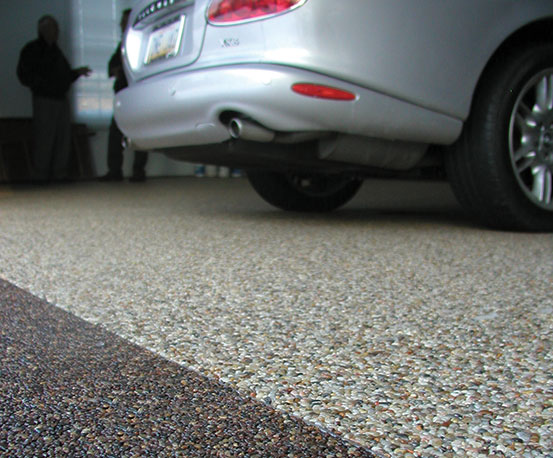 These are designed to protect your floors from tire marks, dirt, road debris, and road salt.
These are designed to protect your floors from tire marks, dirt, road debris, and road salt.
Garage floor mats are made of rubber and help protect your garage floor from tire marks, oil stains, gas stains, spilled paint, road salt, and other debris that can get in your garage due to vehicles or other means.
Garage mats can also be easily cleaned with detergent, light degreaser, and light scrubbing. You can rinse with a hose or use a pressure washer to help spray off any soap residue.
Cleaning is a lot easier than scrubbing oil stains and tire marks off your floor.
Garage floor tire runners, or garage floor protector strips, are made from heavy plastic or rubber. You place tire runners’ wheel width apart and park over them so that they protect your floor. These do a great job at protecting your concrete or epoxy garage floor and keeping your garage floors free of marks.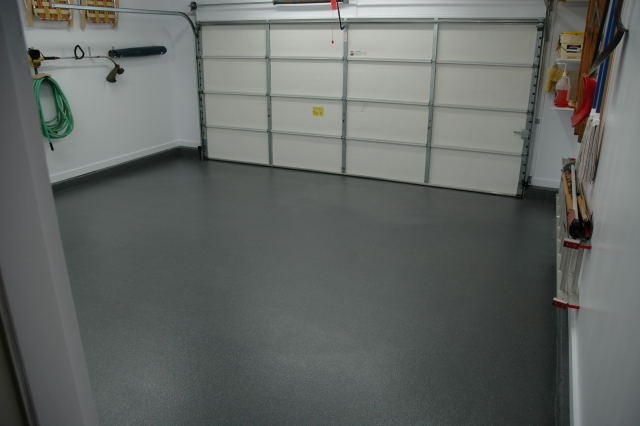
Yes. The rubber material in tire runners and mats is safe to use on epoxy flooring.
If the installer used a high-quality clear coat sealer, you may be able to remove tire marks from your epoxy flooring by wiping down the surface with a light degreaser.
You may need to lightly scrub the surface but be careful if you used a lower quality epoxy product that has a thin clear coat. Epoxy flooring that has a thin application of sealer, may scratch the paint or remove any sealers, especially if you use a stiff brush as you scrub to remove tire marks. But if you have a high-quality installation, the tire marks should come right up without damage.
If you are trying to get rid of tire marks from concrete, the process can be a little more involved. Many concrete garage floors typically do not have paint or a sealer applied.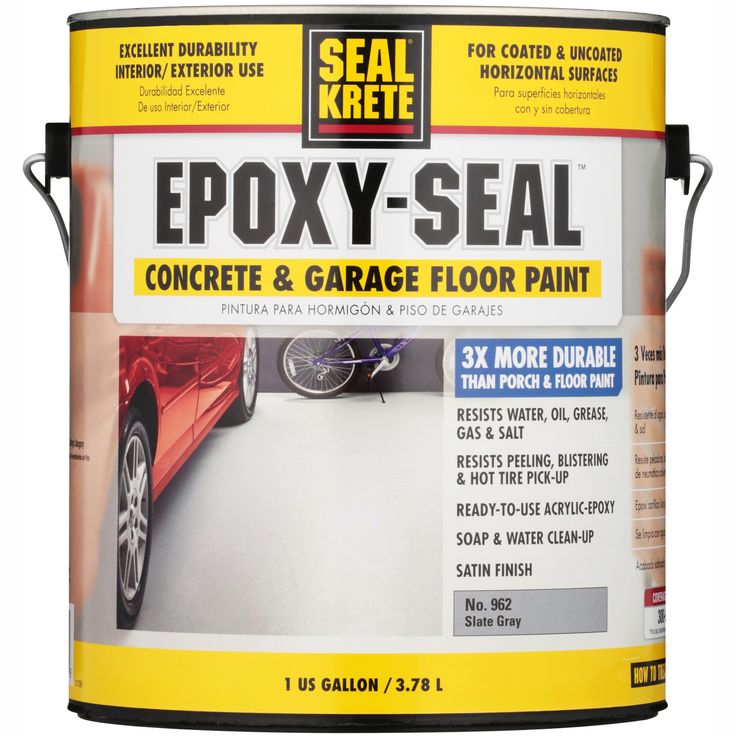 This makes it a bit harder to clean.
This makes it a bit harder to clean.
The best place to start is to pick up some concrete degreaser from Amazon or your local home improvement store. Be sure to wear rubber gloves and eye protection to protect against accidental contact.
Next, apply the concrete degreaser directly to the tire marks and let it sit for several minutes. Do not allow it to dry out. Spray with a light coat of water until you are ready to brush it out.
Use a stiff brush and scrub until the marks are removed from the concrete. Repeat this process as many times as needed until the floor is clean. Since tire marks are hard to get rid of, it can take a few attempts before the concrete is completely clean
After all the marks have been removed from the concrete flooring, clean your floor with soap and rinse out thoroughly to prevent any leftover solvent from remaining behind. Solvent could later come into contact with your skin and lead to irritation if you do not rinse properly.
Finally, allow your garage floor to completely dry before parking your car in the garage.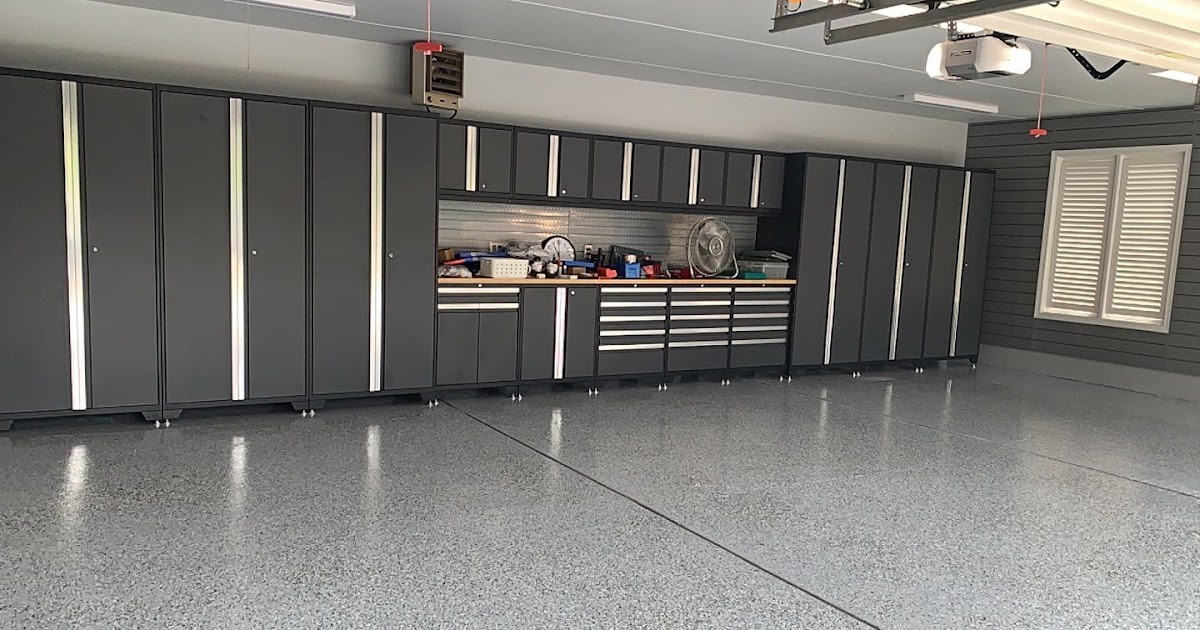
In most cases, a pressure washer is not enough to get rid of tire marks from a garage floor. Concrete garage flooring can make it a tough job, and usually requires you to follow the tips we shared earlier. Plus, if you are not careful, a pressure washer running at too high a pressure, can damage any paint or sealer that has been applied.
Natalia | 12/06/2019 | Updated | Garage | 83,024 views | No Comments
Contents of the article
For most car owners, the garage is a special place where you can not only leave your car overnight, but also spend hours on end doing minor car repairs. Many even turn the garage into a workshop and even a place to meet friends. Such multitasking puts forward special requirements for the decoration of the garage - everything in it must be done so that the car and its owner are in complete safety and comfort. The floor takes the greatest blow, because it is on it that the car will constantly drive, fuels and lubricants can spill on it, and heavy tools can fall on it. The floor covering must endure all these influences, so sooner or later every car owner wonders how to cover the floor in the garage. We are happy to offer you some of the best options.
The floor takes the greatest blow, because it is on it that the car will constantly drive, fuels and lubricants can spill on it, and heavy tools can fall on it. The floor covering must endure all these influences, so sooner or later every car owner wonders how to cover the floor in the garage. We are happy to offer you some of the best options.
Not every flooring material can be used in a garage. The coating must meet the following requirements:
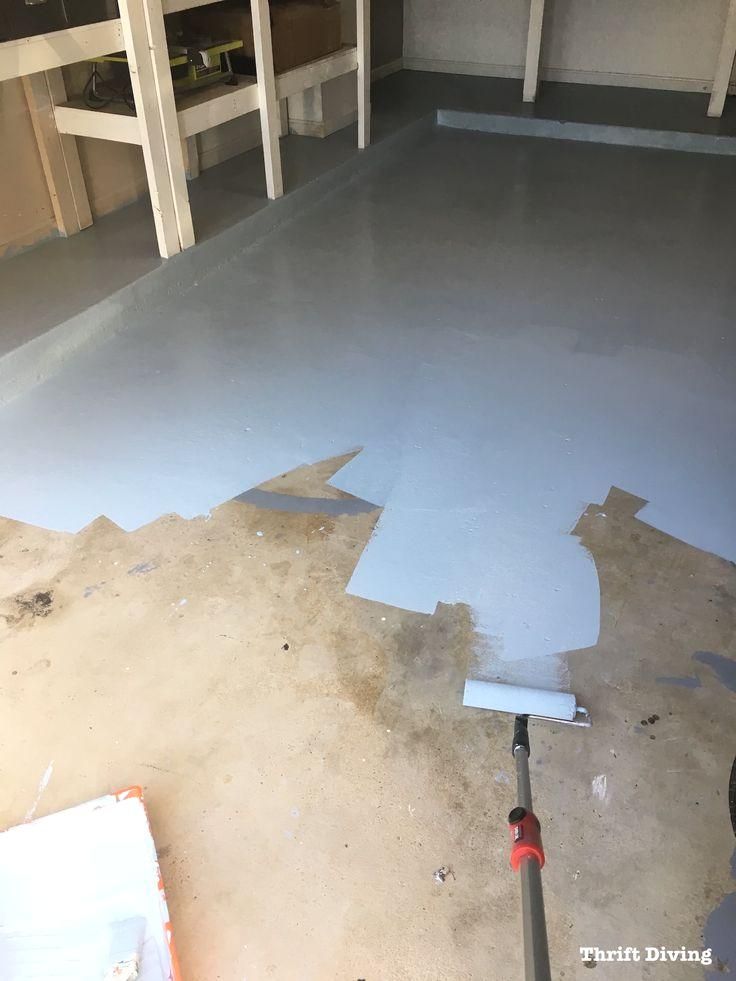 Car maintenance involves the use of gasoline, cleaner, antifreeze, oil, and other substances that, if they get on some materials, can damage them. For a garage, you should choose a coating that is not afraid of such exposure and can be easily cleaned of stains;
Car maintenance involves the use of gasoline, cleaner, antifreeze, oil, and other substances that, if they get on some materials, can damage them. For a garage, you should choose a coating that is not afraid of such exposure and can be easily cleaned of stains; You can also add 9 to the list of requirements0013 efficiency , because, why be cunning, everyone wants to get the maximum by spending the minimum.
The requirements are strict, but car owners have a choice of suitable materials. Let's try to figure out which garage floor is better, and what are the main pros and cons of popular materials.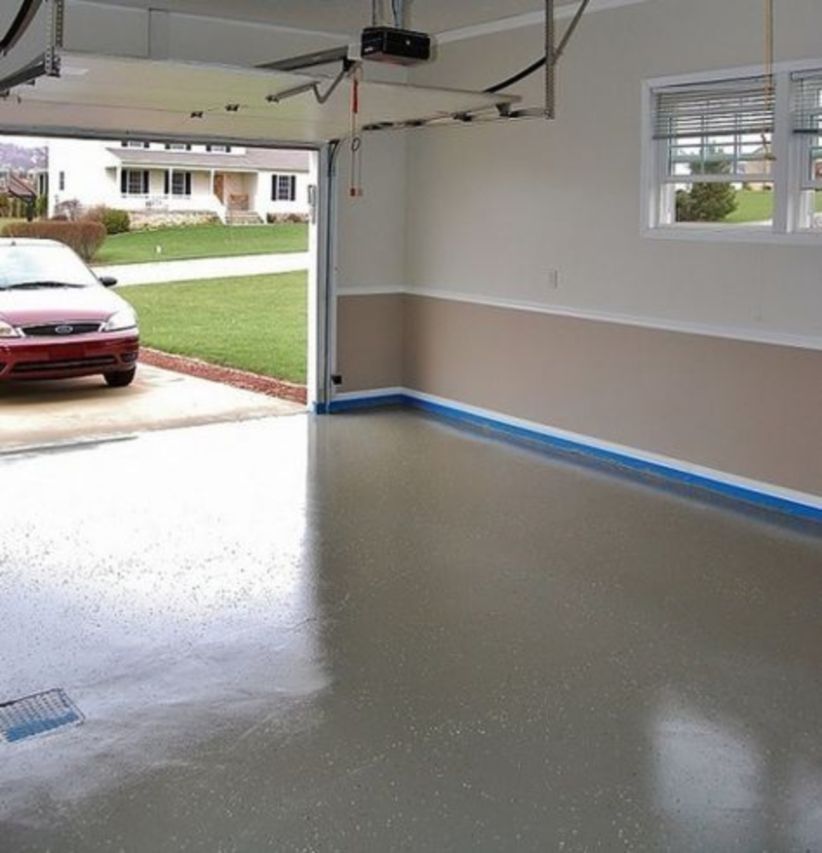
This floor arrangement can be described as "cheap and cheerful". It is unlikely that it will suit those who intend to build a major garage that provides complete safety for the car and comfort for its owner. This is a solution for a very tight budget.
Advantages of dirt floor in the garage:
There are many more disadvantages of :
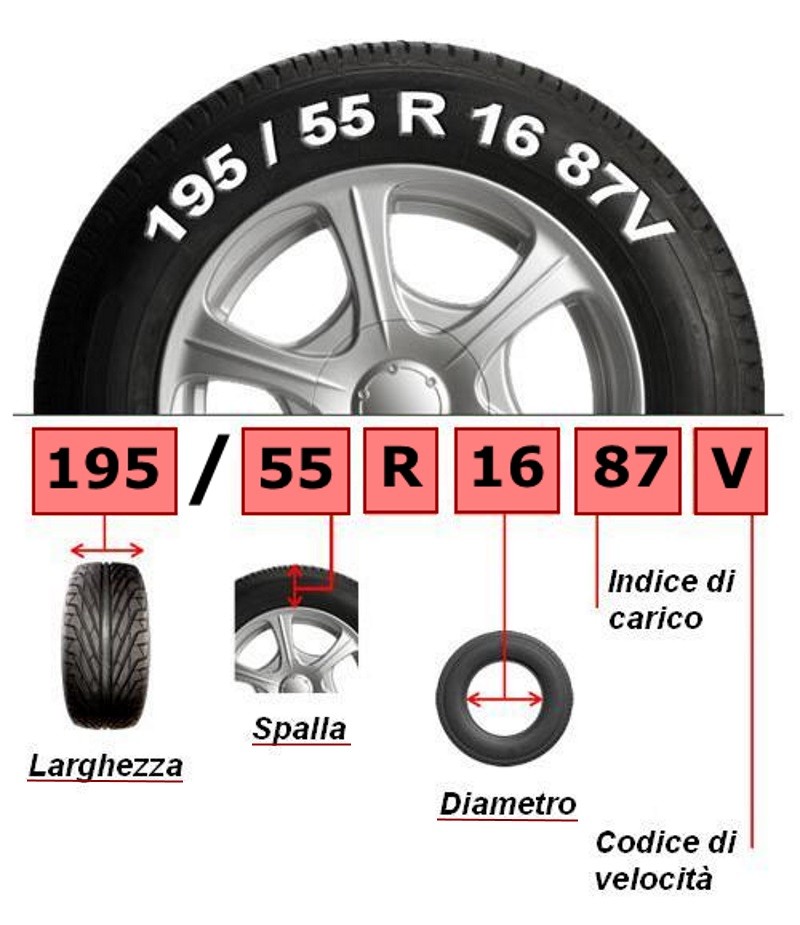
Installing a dirt floor in garage is quite simple. Work begins when the walls are already erected. First, a fertile layer of soil is taken out, which is about 15-40 cm, depending on the region, then the base is covered with plastic wrap or geotextile - this is protection against grass germination. Now it remains to fill the recess with soil. First, a layer of no more than 5 cm is poured, it must be carefully tamped, then more soil is added, rammed again, and so on, until the required level is reached. Please note that it is necessary to make a slight slope towards the gate.
The concrete floor in the garage is classic . Concrete can be the basis for further finishing, or it can be used on its own. Most garage owners prefer concrete flooring, and with good reason.
Advantages of :

Concrete flooring is almost ideal for a garage floor, but this option also has some drawbacks :
The garage floor can be built using prefabricated concrete blocks or by pouring concrete on site. The use of ready-made blocks will significantly speed up the process of organizing the flooring, in addition, the characteristics of the factory blocks are stable and are checked by the factory. On the other hand, special equipment will be required to transport heavy finished blocks, and there will be seams between the individual slabs, therefore the technology of pouring a monolithic slab is usually used.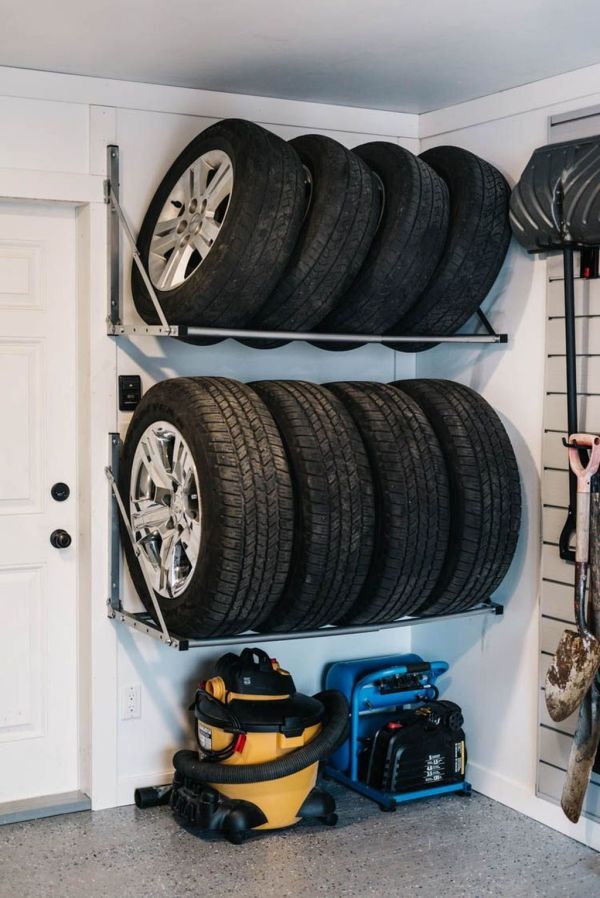
To equip concrete floor , first excavate the soil to a depth of 20-30 cm, fill in about 10 cm of crushed stone, tamp it, equip a sand cushion about 10 cm, it is also carefully tamped. A cement screed with a thickness of about 2 cm is arranged on the sand, then a waterproofing material (for example, roofing material) is laid, and only after that it is the turn to perform the main pouring of the concrete floor (thickness 5-7 cm), and it must be reinforced with steel reinforcement. As the concrete screed dries, it is periodically moistened with water. This will prevent the formation of cracks and ensure proper strength of the concrete. Naturally, the floor is made with a slope towards the gate.
When the concrete has gained strength, the garage can be safely operated, i. use the screed as an independent floor covering. Some people prefer not to stop there and use concrete only as a base for further floor finishing, for example, with porcelain stoneware, tiles, or for pouring a self-leveling floor.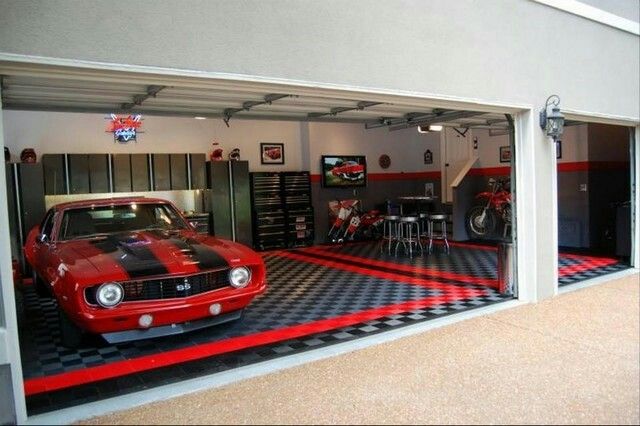
The simplest option for finishing a concrete floor is staining, and it becomes mandatory if, after drying, you rub the screed with the sole of your shoes, and sand appears. Such a floor will not last long, therefore it needs not so much decorative finishing as protection.
The use of self-leveling floors allows you to quickly get a perfectly flat surface. Mixtures for self-leveling floors differ in composition and purpose. So, for example, cement and gypsum mixes are usually used to level the floor. They do not allow you to create a decorative finish, but with their help you can very quickly and easily get rid of small bumps. Such compounds are inexpensive and quite easy to use. To level the floor in the garage for finishing, it is better to use a cement self-leveling floor, since gypsum is sensitive to high humidity.
Another thing is polymer self-leveling floors , which are considered a top coat. The basis for them will be a concrete screed, on top of which a cement self-leveling floor can be used, since the base must be perfectly flat.
The basis for them will be a concrete screed, on top of which a cement self-leveling floor can be used, since the base must be perfectly flat.
The advantages of the polymer self-leveling floor include the following qualities:
Cons :
Coating properties will depend on the composition of the material used . Polymer self-leveling floors are:
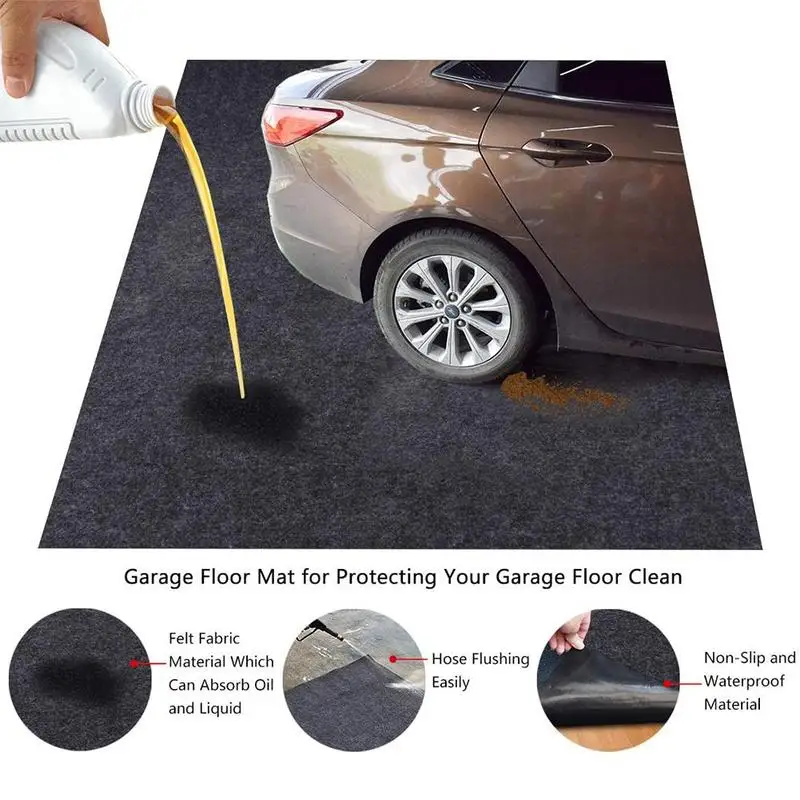 The coating perfectly tolerates the effects of aggressive substances, moisture, and it is not afraid of falling heavy objects. In addition, the coating is resistant to temperature extremes, easy to care for, and cracks and scratches are relatively easy to restore - even if you manage to damage the floor, the deformation site will need to be sanded and varnished on top. It turns out an ideal version of the floor in the garage, and the high price is holding back the distribution;
The coating perfectly tolerates the effects of aggressive substances, moisture, and it is not afraid of falling heavy objects. In addition, the coating is resistant to temperature extremes, easy to care for, and cracks and scratches are relatively easy to restore - even if you manage to damage the floor, the deformation site will need to be sanded and varnished on top. It turns out an ideal version of the floor in the garage, and the high price is holding back the distribution;  The coating comes out hard and durable, but it has a significant disadvantage - it is afraid of impacts. Therefore, if you often make something in the garage and use a lot of heavy tools, then it is better to look towards other materials. If there are no particularly heavy objects that can fall in the garage, then an epoxy self-leveling floor is right for you;
The coating comes out hard and durable, but it has a significant disadvantage - it is afraid of impacts. Therefore, if you often make something in the garage and use a lot of heavy tools, then it is better to look towards other materials. If there are no particularly heavy objects that can fall in the garage, then an epoxy self-leveling floor is right for you; The garage is not the place for fancy decor, but still some car owners will appreciate the opportunity to slightly transform the place where a sufficient amount of time is spent. Polyurethane and epoxy self-leveling floors can be painted in any shade , and if desired, even decorative chips can be added to the composition (paint particles of various shapes and sizes) to simulate the surface of granite, marble, etc. You can, of course, apply a drawing, use a 3D image, and put coins, sand or other decorative elements under a transparent floor layer, but this is hardly appropriate in a garage.
Another option that meets all garage flooring requirements is a rubber floor. The material is based on crumb rubber, which is mixed with adhesives, various modifiers and dyes. Rolls, tiles, rugs are produced from this mixture, and liquid rubber is made.
Advantages of :
The material is not recommended for use near open sources of fire - this limitation is the main disadvantage of coating.
The best choice for the garage is rubber flooring in the form of rolls . Thickness ranges from 2 to 12 mm, cord reinforcement is available, giving the material additional strength. On sale you can find rolls of different shades, the coating is relatively easy to install, but over time it can peel off in the corners. Modular tiles also showed themselves well, from which a pattern can be laid out on the floor. Mounting such a coating is relatively simple, and in case of damage, individual tiles are easy to replace - you just need to take the material in advance with a margin. Another option is to equip a seamless coating by spraying liquid rubber. The main disadvantage of this option is the fear of shock loads.
The original solution for arranging the flooring in the garage is the use of paving slabs. Not only will the garage have an aesthetic appearance, but also the material itself meets all the requirements for garage decoration.
Advantages of :
In , the cons of often add a price, but if you search, you can find more or less affordable options, but you should not go to extremes - too cheap tiles are unlikely to be of high quality. Often such products are made in small industries with poor equipment and without following the technology, and therefore the quality will be appropriate. As for installation, it is better to entrust it to professionals, but if you have some skills in the field of construction, then you can try to do everything yourself.
Choose tiles with a rough surface - they will not slip. Too embossed tiles should not be taken, as it will be more difficult to clean from dirt.
The process of laying tiles in general terms is as follows. A layer of soil 20-30 cm thick is removed, a layer of gravel about 10 cm thick is poured, it is carefully rammed, a layer of sand about 5 cm thick is poured on top of it, and it is also rammed. After that, a layer of sand is poured on which the tiles will be laid. Each element is carefully deepened into a sand cushion, the cracks are filled with sand or a mixture of sand and cement.
This is not an option for those on a tight budget. Although the material is ideal for a garage, it is expensive, because it is rarely used. Porcelain stoneware is obtained by mixing clay, sand, feldspar, pegmatite and water. The mixture is subjected to high pressure and then high temperature. The result is a material that is not inferior in strength to natural stone.
Benefits :
In minuses , in addition to the price, can be attributed to low thermal insulation qualities, as well as fragility, therefore porcelain stoneware must be transported with extreme caution. Lay the material on top of the concrete screed.
Naturally, we are not talking about the tiles that lie in the bathrooms and decorate the walls in the kitchen - such tiles will not withstand the loads typical of a garage. A special acid-resistant tile is suitable, which is usually used in the workshops of industrial enterprises. The material is obtained on the basis of refractory clay, to which substances are added that provide resistance to negative environmental factors.
Pros:
Out of minuses can be noted, perhaps, a small assortment of tile shades, but when it comes to arranging a garage, and not an apartment, then this nuance should hardly be attributed to serious disadvantages.
It's hard to think of a more unsuitable material for a garage floor, but, nevertheless, many car owners still prefer this option. Why? Yes, because the tree has its own advantages:
There are many disadvantages of :
To minimize the negative properties of wood, it must be coated with protective compounds that will increase the resistance of the material to moisture and fire, protect it from insect attacks and mold. Paint will provide additional protection. It is better to choose rocks that are as resistant to moisture as possible for the garage, for example, larch.
The wooden floor is made of boards with a thickness of at least 40 mm, but it is better to take boards with a thickness of 50 mm or more. The wooden floor is laid on logs, which are taken as wooden bars.
Corrugated steel panels can be used as garage flooring. This option is not very common, but it has a lot of advantages :
In , the cons of are only the high price. The installation of steel plates is simple, but it is impossible to cut them yourself, so you need to make the right measurements and order products with the necessary parameters.
An interesting and not very common solution. If you have the opportunity to rent special equipment, then the option with asphalt pavement is worth considering. To its benefits we assign:
Although the cost of asphalt pavement is low, for its high-quality laying it is necessary to use a roller and invite specialists. Installation is carried out only in the warm season, otherwise the coating will not last long.
Before choosing a garage flooring, carefully weigh its advantages and disadvantages, as well as consider installation features, and, of course, take into account the cost of the material. Remember that the durability of the finish depends not only on the quality of the material itself, but also on the correct installation of it.
The article was written for remstroiblog.ru.
Tags: Garage and parking, Flooring
Having made a concrete floor in the garage, after a while you realize that the option, although not bad, is not ideal. Firstly, during cleaning it is dusty, the dust is fine, clogged into the smallest cracks, lays down with a thin light gray coating. Secondly, the trapped liquids are absorbed, and there is no way to remove them. If the stain is oily, dirt constantly sticks to it. After a while, the floor seems to be dirty all the time. So the idea comes to make the floor covering in the garage so that it does not “dust”, it washes well, but at the same time it is non-slip and durable.
have an even, strong, nonsense in the garage every car owner ofContent of Article
9000 2 garage, so that it does not dust, does not get very dirty, and spend a little time at the same time, pay attention to impregnations for concrete (they also call a primer for concrete). These are multicomponent compositions based on polymers. They are organic and inorganic. Since these are impregnations, they do not form any film on the surface, and therefore they cannot peel off and lag behind. Their components penetrate concrete, bind molecules with polymer chains. As a result, the strength of the surface becomes 2-3 times stronger, resistance to aggressive environments (acidic and alkaline), temperature extremes increases, it tolerates frost better, and the formation of dust is also excluded.
In general, there are three types of primers for concrete:
If you will not paint the floor or fill it with any other top coat after primer treatment, then water-dispersion primers are best suited for dedusting garage floors. Under paint or other coatings, primers are taken of the same type: under polyurethane paint for concrete of the same composition, preparation is taken, etc.
This garage coating is good for everyone, except for the price - 1 liter costs about $5. You can find packing of 3 kg and 20 kg. Impregnation consumption when applying the first layer 0.25-0.5 kg/m 2 , for the second - 0.15-0.2 kg / m 2 .
Do not dilute when working, smear generously, at least twice. Polyurethane impregnation for concrete binds particles without forming a film. Such a concrete floor stops dusting, it will absorb less liquid. The same compositions strengthen the crumbling concrete surface. If the process has already gone far, they will not help, but if only traces of abrasion are visible, impregnation will help delay the process.
Application of Polyurethane Impregnation Polymer impregnations are applied to dry surfaces only. The moisture content of the concrete must be no more than 5% (at least 28 days must pass from the moment of pouring). The composition is poured onto the floor in portions, distributing with a roller or a special mop over the entire surface. Some companies can add color, so that at the same time you can get a colored floor in the garage. This treatment can be used as a preparation for the subsequent application of paint or polymer flooring.
Application features: temperature must be between 0°C and 17°C, air humidity must be at least 70%. If the humidity is lower, it must be moistened artificially - with electric humidifiers or by hanging wet rags in the garage, constantly making sure that they do not dry out. Only under such conditions will polymerization be good.
This type of impregnation consists of two components that are mixed immediately before use. It is possible to work with them at temperatures above +5°C, there are no other requirements. The cost is higher than that of polymer ones - $ 7 per kg, the consumption is almost the same.
Garage floor dedusting epoxy Special paints for concrete can be applied over the primer. They last a long time - with what compounds they paint floors in service stations, garages, etc. These are far from ordinary paints, but multicomponent polymer-based compositions to which coloring pigments are added. It is necessary to choose depending on the tasks that the floor covering in the garage should perform:
If we talk specifically about garages, then epoxy compounds are probably more suitable. They create a strong film that adheres very well to the concrete base. Such paint does not swell and does not fly around. Over time, it can rub a little, and then in places of a very heavy load. It can be used in service stations, basements and garages.
Paint for concrete simultaneously removes dust, gives an attractive appearance, reduces moisture absorption Epoxy paint for concrete is applied to the prepared concrete base. The floor must be dry (at least 30 days must pass from the moment of pouring). If the screed has been poured recently, cement laitance is removed from the surface with a hard (steel) brush. If the floor is old, there are chips and cracks, repair them, remove greasy stains. Remove debris after processing.
Before applying the paint, the floor is washed with PVA diluted with water. The second option is a weak aqueous solution of hydrochloric acid (1:9). After a day, the surface is cleaned with a vacuum cleaner or a soft brush. after that, the concrete floor is ready for applying epoxy paint.
Bring the base and hardener into a warm room a day before. The temperature must be above 18°C. Mix each of the components separately, in its own container. Then, a hardener is added to the container with the base according to the norm and the composition is mixed. If necessary, you can use the solvent specified in the instructions. The viability of such paint is small (time to hardening), so you need to work quickly.
This type of paint has improved waterproofing properties, good hiding power, high wear resistance, easy to clean, even with detergents, alkali resistant. Can be used at temperatures from -50°C to +60°C. When painted, it creates a coating that is very similar to rubber, with almost the same properties. There are also disadvantages - the surface is too smooth, and in winter it can be slippery. The second unpleasant moment, when the car drives into the garage and slips a little, the wheels can tear off pieces of paint. The solution is to lay rubber bands under the wheels. the most popular option is from the conveyor. They do not wear out for years, and with rubber paint they will coexist perfectly.
Surface preparation consists in removing old peeling coatings, chalk, dust, grease stains. If the floor has a glossy finish, sand it to a dull finish. The last step is to wash the floor with a solution of soda, then rinse with water and dry.
Paint should be applied in 2-3 coats. Before use, stir, dilute is not recommended, but in extreme cases, you can use the solvent specified in the instructions. Stir the paint regularly while working.
Rubber flooring will be convenient and practical. Its minus is a solid price - from $ 18 per square meter, if we talk about rubber modular coating.
Today rubber flooring is available in three versions:
Roll and modular flooring differ in the type of laying and the form of release. The rest of the characteristics are similar. The method of installation practically does not differ, only in one case the coating is assembled from fragments, most often of a square shape, with edges designed in the form of locks of various configurations. The roll coating is rolled out on the floor. Both types are glued with polyurethane adhesive. Standard concrete preparation: repair of chips and dents, removal of dust and dirt, primer (polymer impregnation).
Laying a rubber modular floor - connecting dovetail locks When choosing a modular or rolled rubber flooring, pay attention to the thickness of the rubber. It can be from 4 mm to 50 mm. A very thick floor covering in the garage is not suitable for him, but too thin can be damaged by the wheels. The optimal thickness is 10-15 mm. It is not very expensive for the price, and the characteristics are more than enough.
Rubber crumb or they say rubber asphalt is a two-component coating. The crumb itself comes in bags and is black in color. To give it any other color, there are dyes. They are added to dry crumbs and mixed until it is completely colored. Then a binder is added. Usually it is a polyurethane adhesive. The mass is stirred until smooth. But the process must occur quickly - the hardening time is very short. The crumb with polyurethane is laid out on the prepared base (levelled, primed, covered with a layer of polyurethane glue), leveled and pressed down with a roller.
This type of flooring has recently appeared, made of polyvinyl chloride (PVC) with various additives. There are both options for the home (PVC laminate), and for technical and industrial premises. If we talk about properties, then the PVC tile flooring in the garage absorbs sounds, makes the floor warmer, is not afraid of the effects of gasolines, solvents, acids, fats, alkalis, is completely waterproof, durable. The price is comparable to the cost of commercial linoleum.
According to the installation method, there are two types of PVC tiles - a modular coating that is simply connected with locks and is not attached to the base, and a coating that is glued to polymer glue. The laying requires a level surface with differences of no more than 5 mm/m 2 . This is perhaps the only drawback of this material: such a flat floor in the garage is the exception rather than the rule.
PVC tile used in commercial garages and workshops where loads are significantly higher Understandable, but not the best choice. Firstly, debris constantly accumulates in the seams. Secondly, the coating is slippery, unless you take a special tile with an anti-slip surface, but it is expensive. Thirdly, from the fall of heavy objects, the tile breaks. Nevertheless, the floor is made of tiles in the garage, because there are also pluses: it is easy to clean, a well-known laying technology.
When it comes to choosing tiles, technical porcelain stoneware is the best option. It is not as beautiful as decorative, but also more affordable in price. Its unpolished surface does not slip, laying according to the usual technology for tiles. You can only try to make fewer seams so that there are fewer problems with them.
Technical porcelain stoneware can be used for garage flooringThere is a very inexpensive option for finishing the floor in the garage with tiles - buy a battle and make a "mosaic". True, such artistic work will take more time, but the tile battle is sold for almost nothing.
Screeds have very good technical characteristics and appearance.